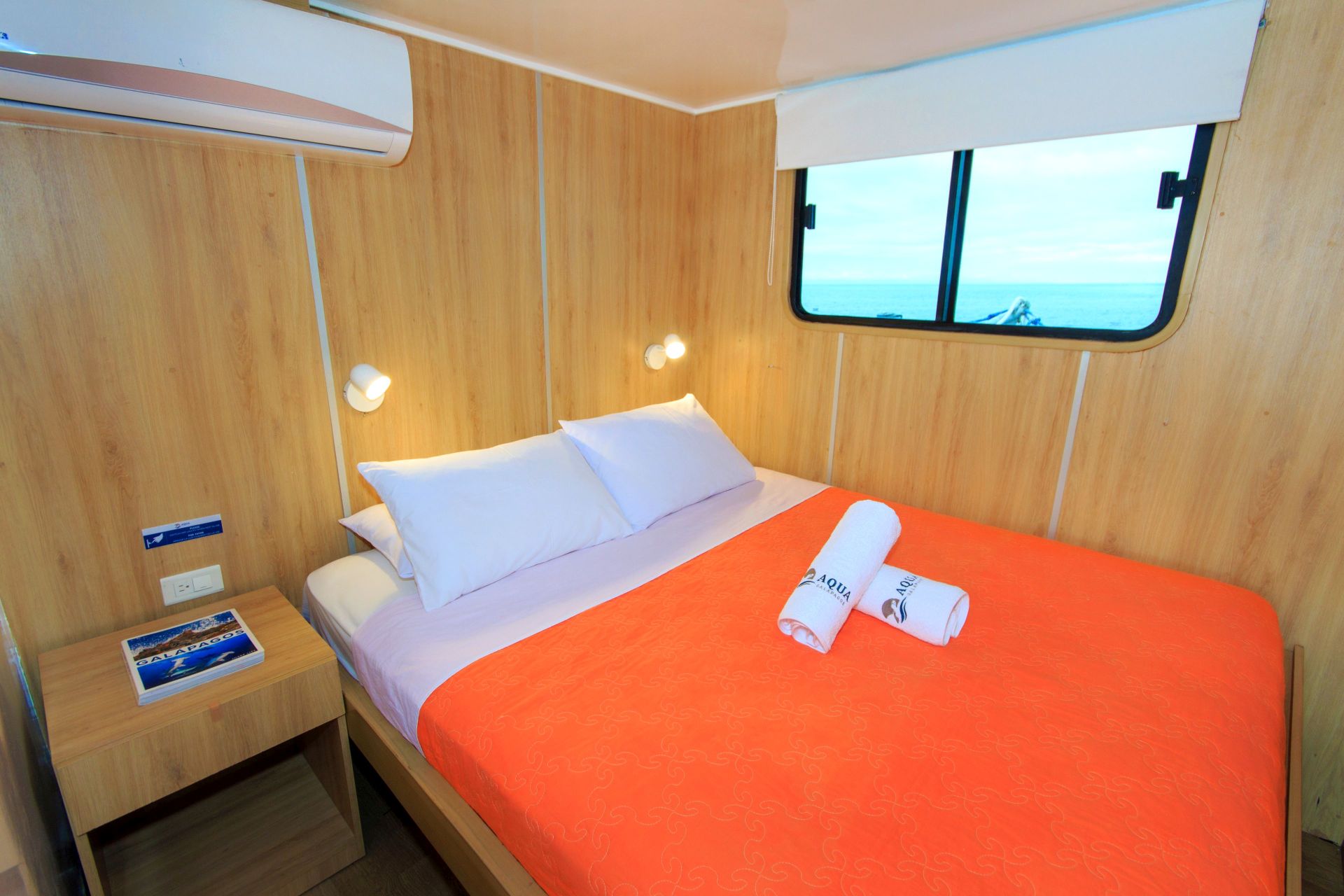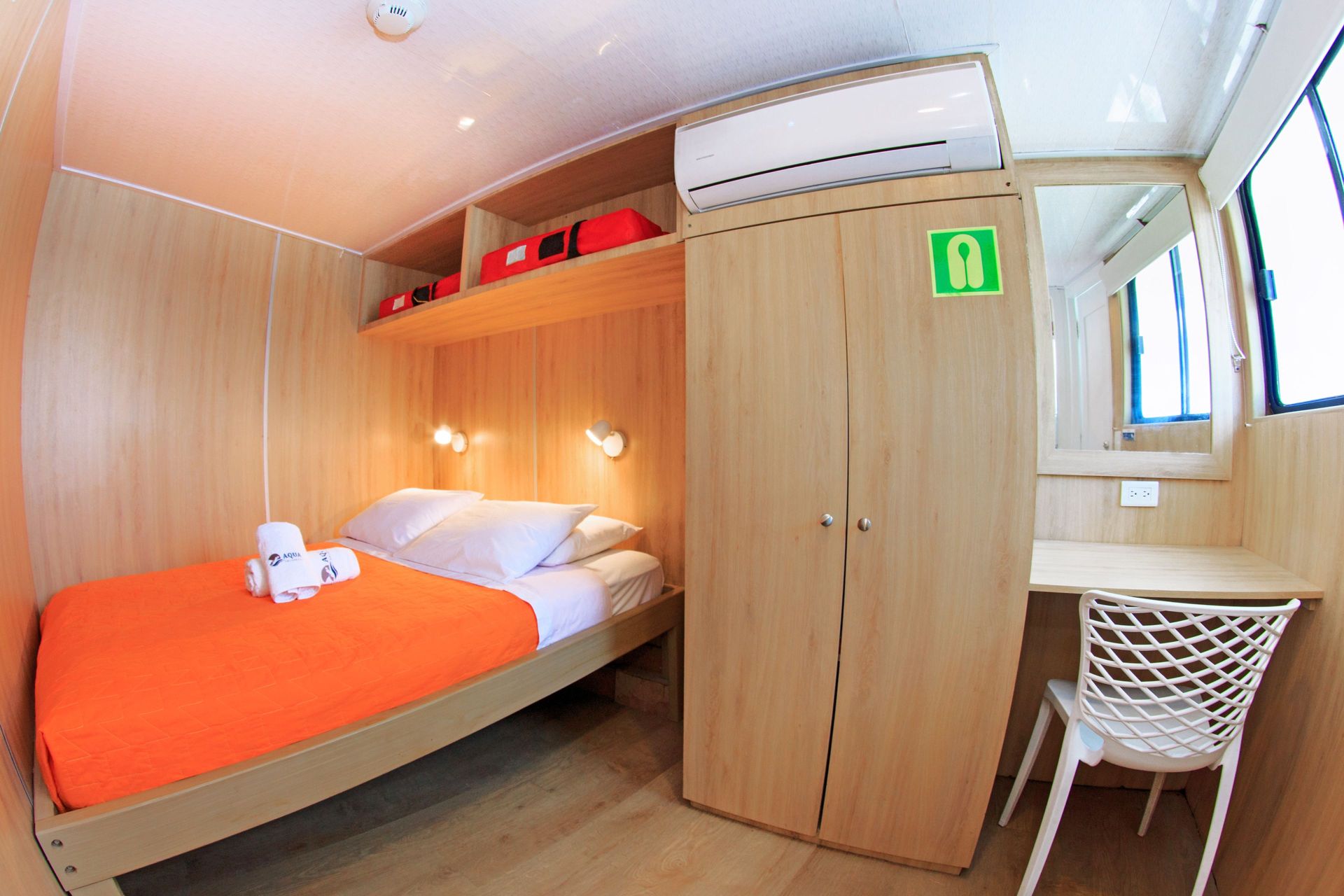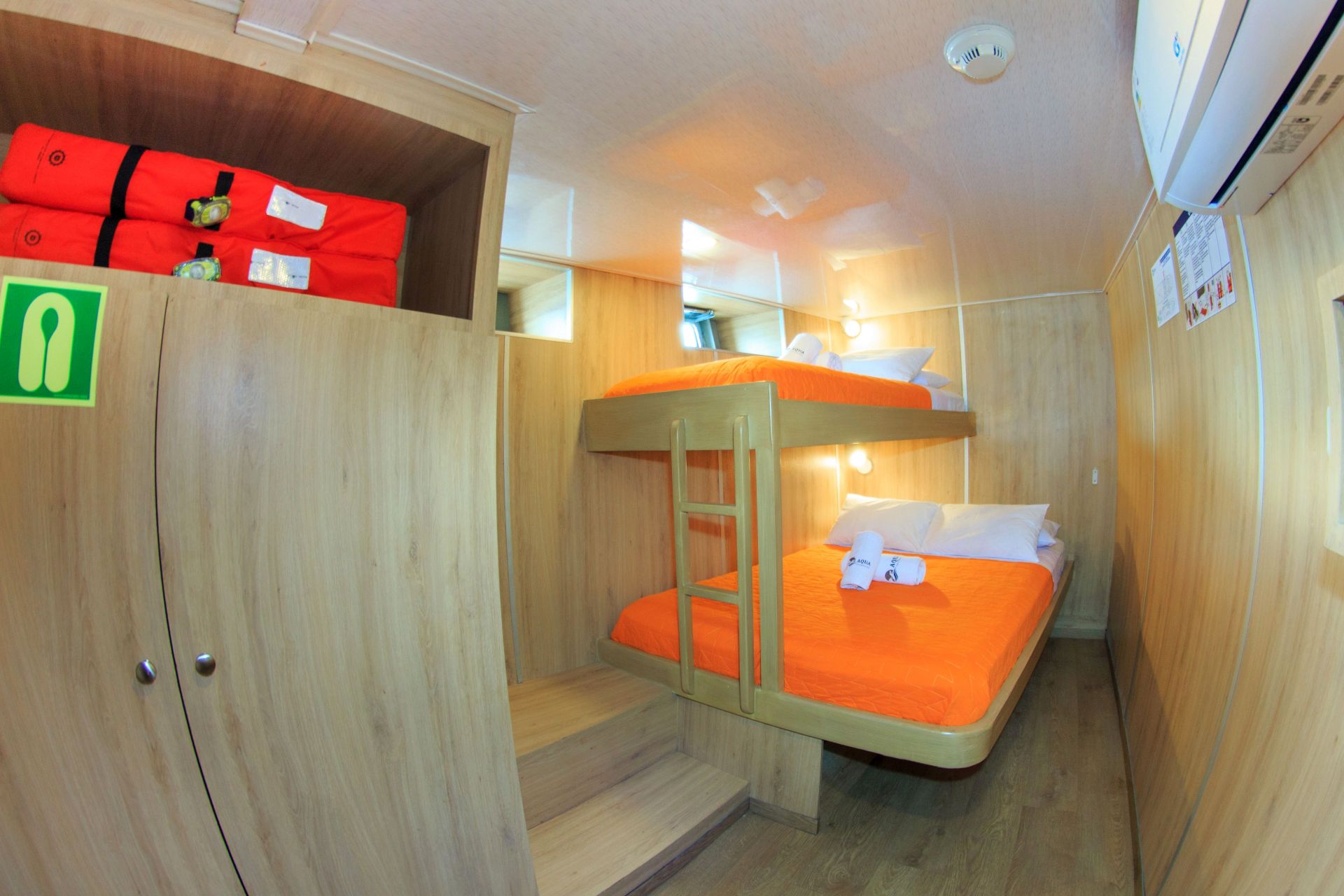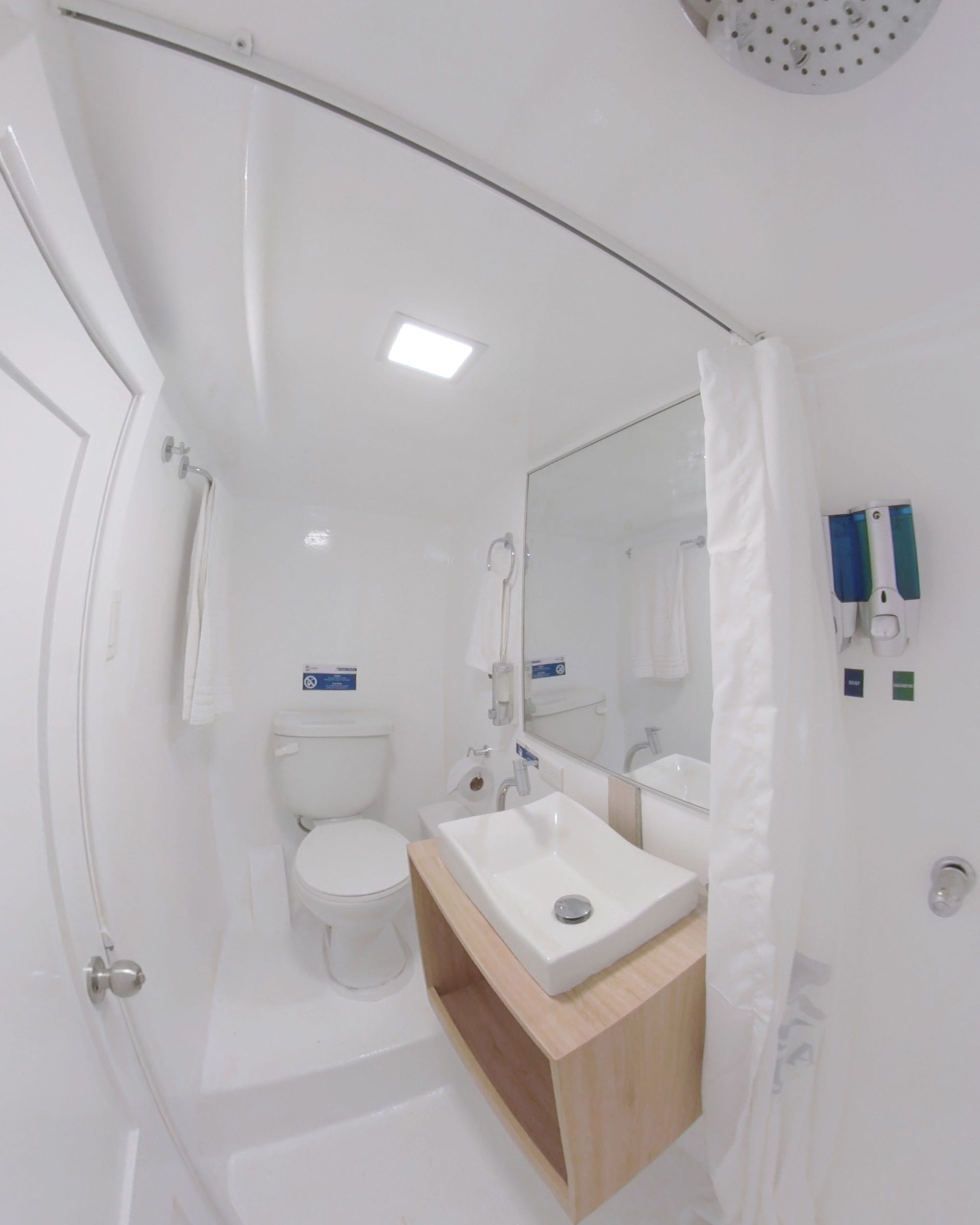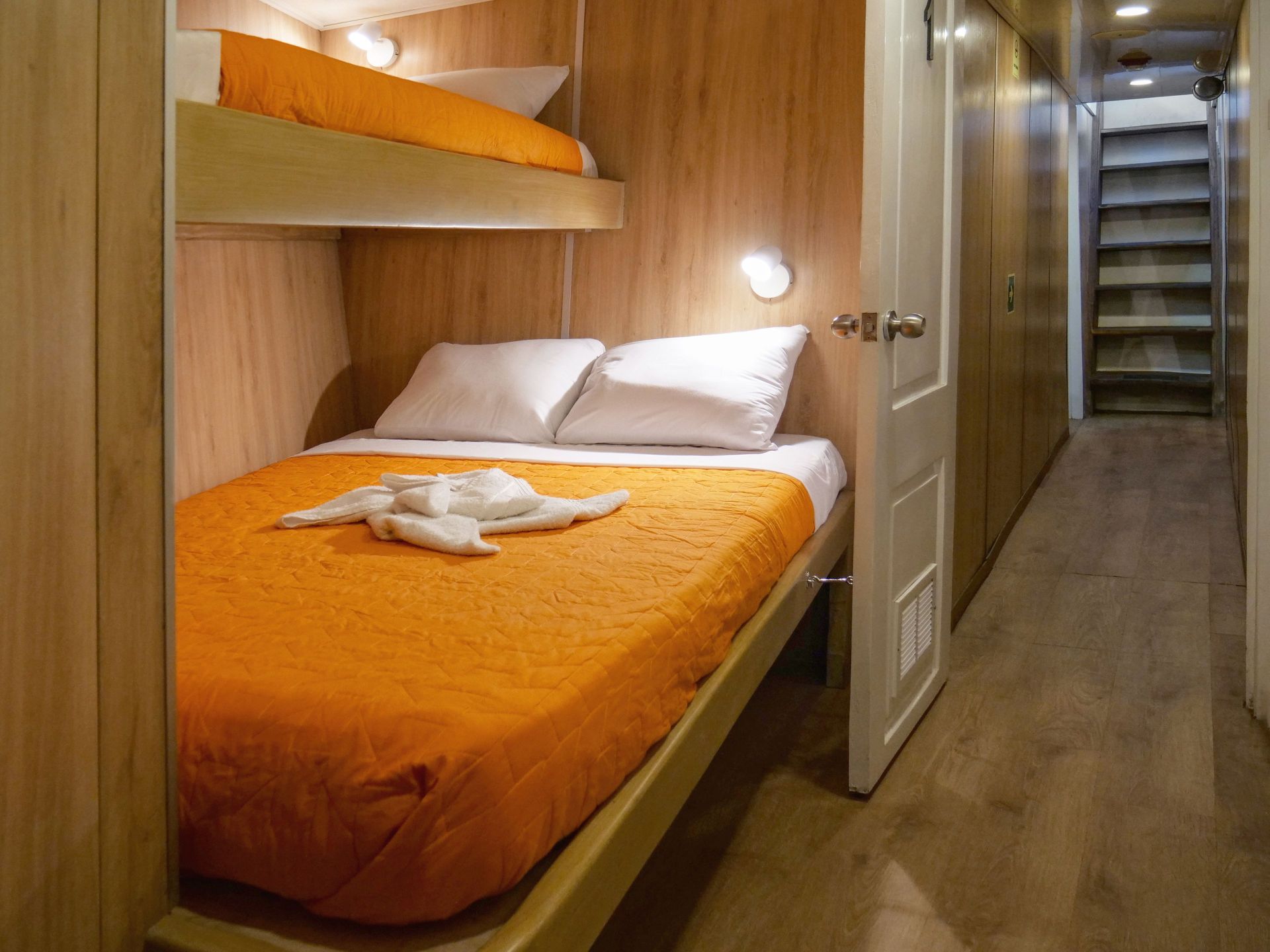GALLERY YATCH
ACCOMODATION
DECK PLANS
This deck plan is representative of the layout, but do not rely on it for cabin sizes.
DAY BY DAY
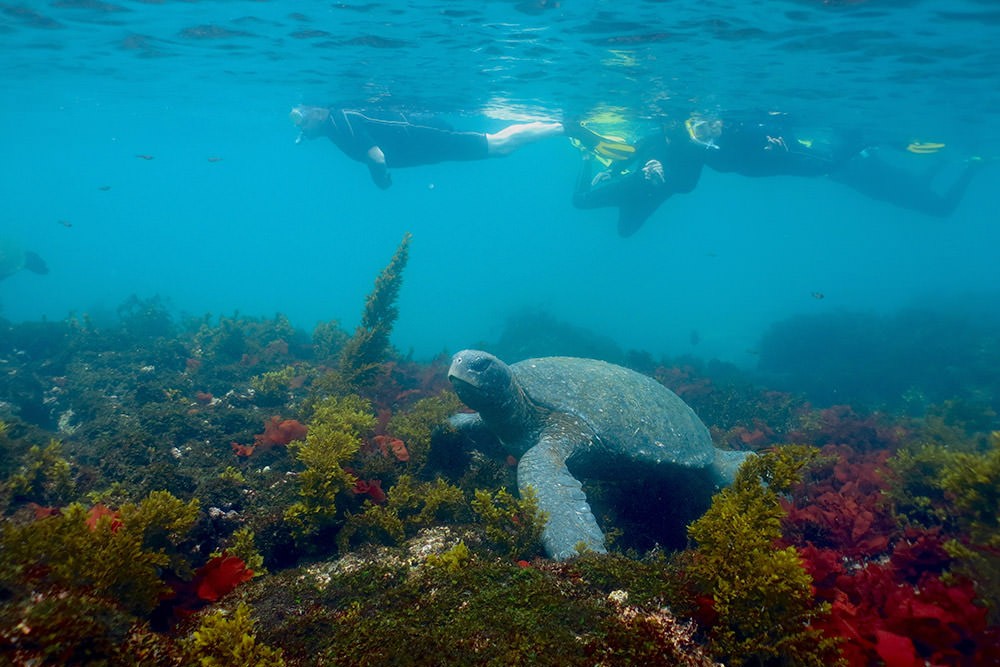

DIVING THE GALAPAGOS
Scuba diving the Galapagos Islands is not only about sharks, it’s also about the sheer abundance of marine species. Year after year, Galapagos is rated as the most healthy marine environment. In addition to sharks, we have Dolphins, Penguins, Orcas, Mola Molas, Mantas, Eagle Rays, Mobulas, Stingrays, Sea Lions, Turtles, Barracudas, Jacks, many tropical reef species as well as critters like the endemic Marine Iguanas. And that doesn’t begin to cover all you will see when you dive the Galapagos!
DIVING FACTS
Of course you can! Shorter itineraries give an excellent impression of the Galapagos if you have limited time or are on a budget. However, you won’t be able to see all the highlights. If you want to get the maximum out of your visit, we suggest extending your expedition by asking for the combined itineraries every one of our yachts offer.By extending your expedition, you can explore nearly all the islands and wildlife existent in almost every corner of the archipelago. For example, longer cruises are the only way to see albatrosses in Española, land iguanas in South Plaza, red-footed boobies in Genovesa, and penguins in the western archipelago. A trip to Galapagos is a once in a lifetime visit. Every island is different and is definitely worth seeing!We will kindly help you with organizing hotel bookings, hotel-based packages and day tours, including diving if you prefer a hotel-based island extension. This way, you can experience the Galapagos in two different ways: on an expedition boat to visit some of the more exclusive remote islands, and a land-based tour to explore the surroundings of the inhabited islands.
Families with children are very welcome on board! However, we suggest that your children are at least 3-4 years old. This way, they can enjoy the experience and be able to endure the cruise. We highly recommend to consider waiting a few years until they realize how special the Galapagos Islands are. Although we don’t offer special children’s programs, they will love being nearby animals, and activities such as swimming, snorkelling and sea kayakingPlease, remember that parents or legal guardians are responsible for their children. They must take into account that children may not undertake longer or more difficult activities.We have special discounts for children younger than 12 years (-20% for 1 child per 2 parents), as well as reduced entrances fees to the Galapagos National Park.
We highly recommend that our passengers have a reasonably good physical condition. Our programs are well-filled, but you can always skip a more demanding activity and take a rest on board.We would like to point out some problems that elderly or disabled people may encounter:Some trails are long and/or more difficult than others. Some have sharp lava rocks or light scrambling (especially in unspoiled remote areas like the western Galapagos islands that hardly have any touristic infrastructure, as well as in Española, Genovesa and Tintoreras).There may also be trouble while embarking and disembarking the inflatable boat, especially when the tide is a bit rough. However, our crew will always be there to help you in and out safely.Please check also in our yacht design whether the steps on board are suitable for you.
In case you don’t prefer fully booked yachts, your best choice is probably June and in between the last week of August until the first week of November. The first two weeks of December may also apply. The busiest seasons are generally Christmas and New Year departures.No matter what time of year you visit the islands, you will always find nice holiday weather and wildlife activity.During the “hot” season the islands are generally much greener and sunnier, and land birds are most active (nesting and nurturing). It is also during this period that the ocean is calmer and water temperature is warmer for swimming and snorkelling.During the “cool” season, seabirds and sea mammals are most active. This is best time for observing courtship displays, breeding, and nurturing of sea birds.
Depending on the sea currents and winds, there will be light to moderate movement of the vessel while navigating (mainly at night). The Galapagos internal waters are mostly calm, but open ocean crossings can sometimes provoke discomfort during a “rough” night, especially from August to September. Seas generally are at their calmest from January to April.Most passengers are not affected. If they are, it’s lasts a short time. However, if you are prone to seasickness, we recommend you to use a patch (these work very well) or take a pill before the anchor is lifted. Consult your doctor which medicine works best for you. Sooner or later, your body will adapt to the motion of the ship and the discomfort will diminish.
On occasions, the Galapagos National Park authorities can oblige the yacht to vary the itinerary. For example, when certain species need a resting period, a landing site is temporarily closed to visitors, or when trails or facilities are under maintenance. The captain can also decide to change the itinerary for weather, safety or unforeseen reasons.
